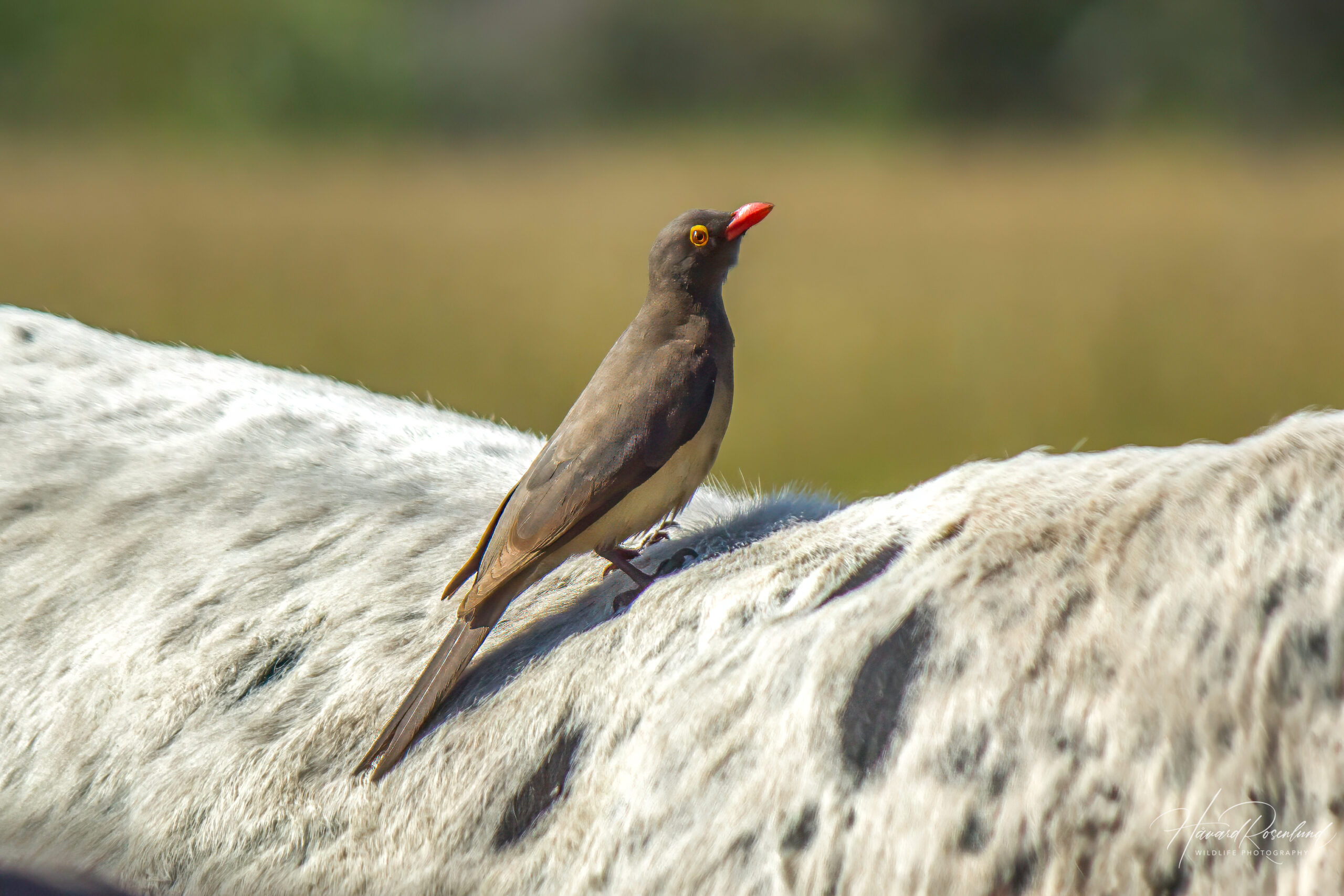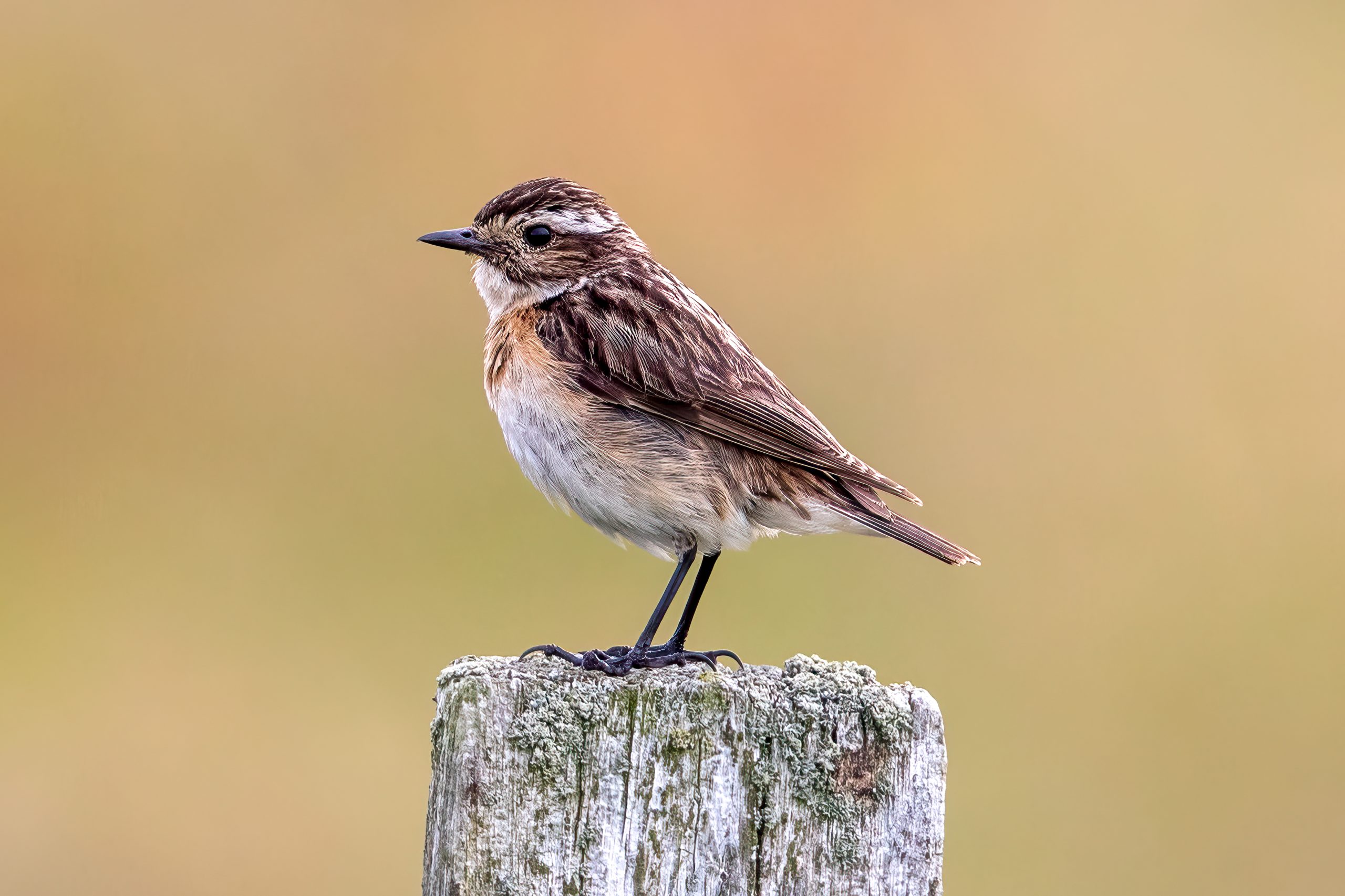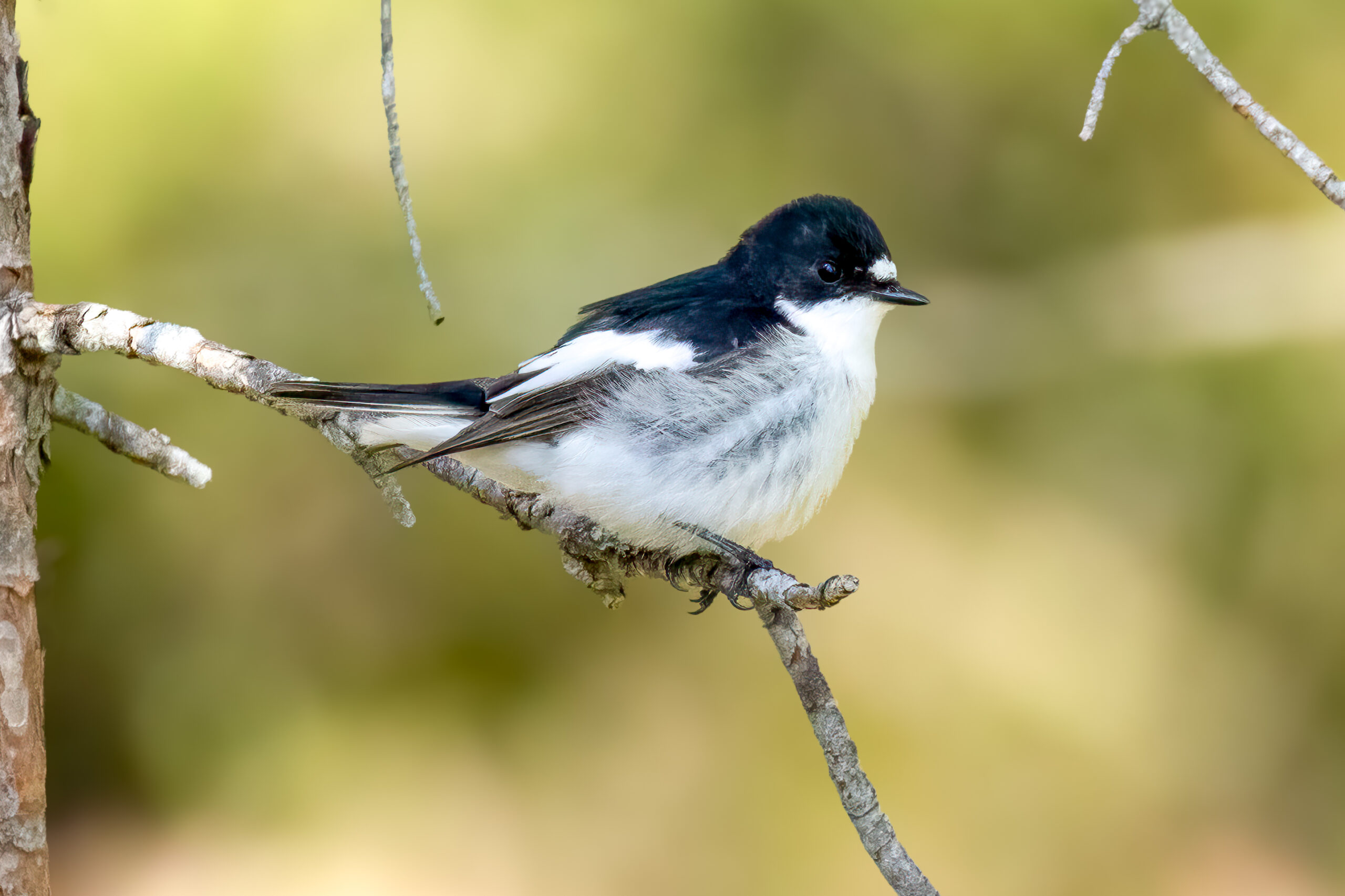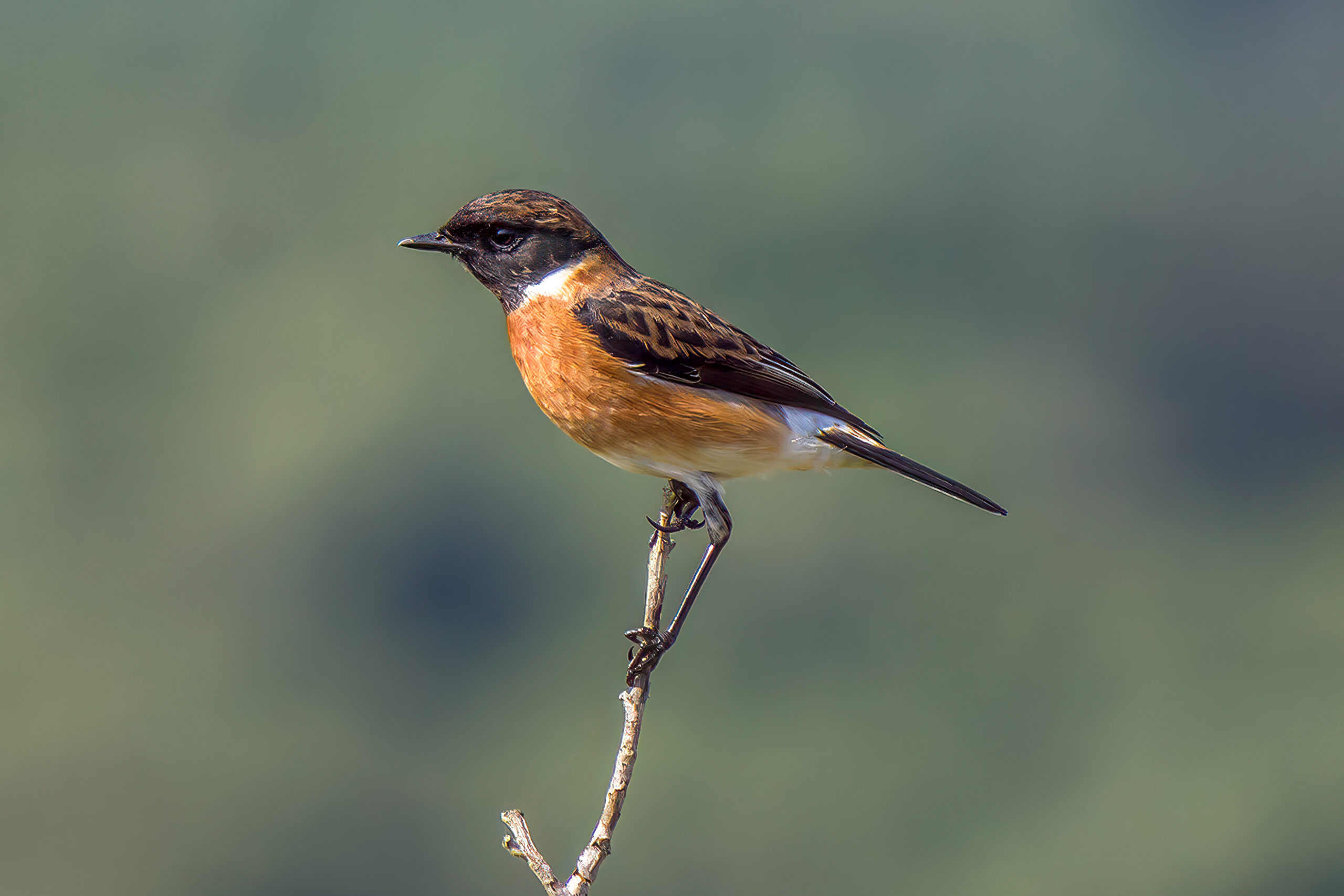Red-billed Oxpecker
(Buphagus erythrorynchus)
Description
The red-billed oxpecker (Buphagus erythrorynchus) is a passerine bird native to the savannas of Eastern and Southern Africa. This bird is typically about 20 cm in length, with a distinctive red bill, a yellow eye-ring, and mainly brown plumage. It is lighter on the belly and with a slightly streaked appearance. Juvenile oxpeckers are darker brown than adults, with a bill that turns from dark olive to adult coloration after four months. Their flight is strong and direct, with a hissy crackling call.
It is one of only two species of oxpecker, the other being the yellow-billed oxpecker (Buphagus africanus). They overlap in many parts of their range. The yellow-billed oxpecker has a yellow and red bill (and not all red, as the red-billed oxpecker) and lacks the yellow eye-ring, making it easy to distinguish the two species. In Swahili, they are known as “Askari wa kifaru”, meaning “the rhino’s guard,” due to their relationship with rhinos where they alert these nearsighted animals to potential dangers.
Diet & habitat
The red-billed oxpecker prefers open country habitats including light woodlands, grasslands, and areas with scattered trees, often near water bodies. It primarily feeds on insects, especially ticks found on large wild and domesticated mammals like cattle, consuming the blood from these parasites. Remarkably adept at foraging while clinging to moving animals. It sometimes pecks at wounds to keep them open as if feeds on the animal’s blood. An adult oxpecker can consume nearly 100 blood-engorged ticks or over 12,000 larvae in a day. In an unusual behavior, these birds have been observed perching on the udders of impalas and even sucking their milk.
Nesting
Red-billed oxpeckers are monogamous and pairs remain together for life, displaying strong pair bonding. They build nests in tree hollows, lining them with animal fur and dung. The female lays 2-5 creamy white eggs with darker markings, which both parents incubate. The breeding season varies with geographical location but is generally aligned with the onset of the rainy season. Chicks are born blind and featherless, and fledge after about 30 days. They can raise up to three broods each season, with eggs hatching after 12-13 days.
Status
The red-billed oxpecker is locally common in most areas. Its numbers are unknown, but it is believed the species is in decline because of a reduction in large herbivore species and the use of cattle. It is listed as least concern on the IUCN Red List.








